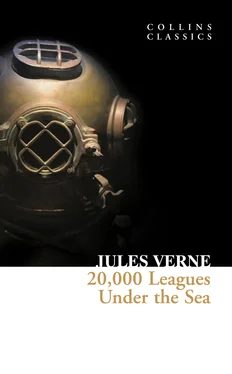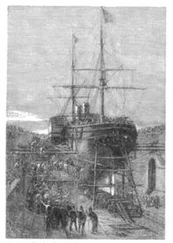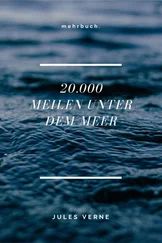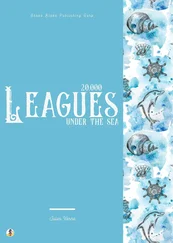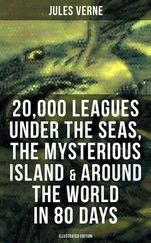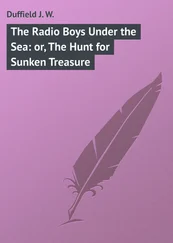Collins Classics
In 1819, Millworker William Collins from Glasgow, Scotland, set up a company for printing and publishing pamphlets, sermons, hymn books and prayer books. That company was Collins and was to mark the birth of HarperCollins Publishers as we know it today. The long tradition of Collins dictionary publishing can be traced back to the first dictionary William published in 1824, Greek and English Lexicon . Indeed, from 1840 onwards, he began to produce illustrated dictionaries and even obtained a licence to print and publish the Bible.
Soon after, William published the first Collins novel, Ready Reckoner , however it was the time of the Long Depression, where harvests were poor, prices were high, potato crops had failed and violence was erupting in Europe. As a result, many factories across the country were forced to close down and William chose to retire in 1846, partly due to the hardships he was facing.
Aged 30, William’s son, William II took over the business. A keen humanitarian with a warm heart and a generous spirit, William II was truly ‘Victorian’ in his outlook. He introduced new, up-to-date steam presses and published affordable editions of Shakespeare’s works and Pilgrim’s Progress , making them available to the masses for the first time. A new demand for educational books meant that success came with the publication of travel books, scientific books, encyclopaedias and dictionaries. This demand to be educated led to the later publication of atlases and Collins also held the monopoly on scripture writing at the time.
In the 1860s Collins began to expand and diversify and the idea of ‘books for the millions’ was developed. Affordable editions of classical literature were published and in 1903 Collins introduced 10 titles in their Collins Handy Illustrated Pocket Novels. These proved so popular that a few years later this had increased to an output of 50 volumes, selling nearly half a million in their year of publication. In the same year, The Everyman’s Library was also instituted, with the idea of publishing an affordable library of the most important classical works, biographies, religious and philosophical treatments, plays, poems, travel and adventure. This series eclipsed all competition at the time and the introduction of paperback books in the 1950s helped to open that market and marked a high point in the industry.
HarperCollins is and has always been a champion of the classics and the current Collins Classics series follows in this tradition – publishing classical literature that is affordable and available to all. Beautifully packaged, highly collectible and intended to be reread and enjoyed at every opportunity.
Cover Page
Title Page
History of Collins
CHAPTER 1 A Floating Reef
CHAPTER 2 For and Against
CHAPTER 3 As Monsieur Pleases
CHAPTER 4 Ned Land
CHAPTER 5 At Random
CHAPTER 6 With all Steam on
CHAPTER 7 A Whale of an Unknown Species
CHAPTER 8 Mobilis in Mobile
CHAPTER 9 Ned Land’s Anger
CHAPTER 10 Nemo
CHAPTER 11 The ‘Nautilus’
CHAPTER 12 Everything by Electricity
CHAPTER 13 Figures
CHAPTER 14 The Black River
CHAPTER 15 A Written Invitation
CHAPTER 16 At the Bottom of the Sea
CHAPTER 17 A Submarine Forest
CHAPTER 18 Four Thousand Leagues Under the Pacific
CHAPTER 19 Vanikoro
CHAPTER 20 Torres Straits
CHAPTER 21 Some Days on Land
CHAPTER 22 Captain Nemo’s Thunderbolt
CHAPTER 23 Aegri Somnia
CHAPTER 24 The Coral Kingdom
CHAPTER 25 The Indian Ocean
CHAPTER 26 A Fresh Proposition of Captain Nemo’s
CHAPTER 27 A Pearl Worth Ten Millions
CHAPTER 28 The Red Sea
CHAPTER 29 The Arabian Tunnel
CHAPTER 30 The Grecian Archipelago
CHAPTER 31 The Mediterranean in Forty-Eight Hours
CHAPTER 32 Vigo Bay
CHAPTER 33 A Vanished Continent
CHAPTER 34 Submarine Coalfields
CHAPTER 35 The Sargasso Sea
CHAPTER 36 Cachalots and Whales
CHAPTER 37 The Ice-Bank
CHAPTER 38 The South Pole
CHAPTER 39 Accident or Incident?
CHAPTER 40 Want of Air
CHAPTER 41 From Cape Horn to the Amazon
CHAPTER 42 Poulps
CHAPTER 43 The Gulf Stream
CHAPTER 44 In Latitude 47° 24′ and Longitude 17° 18′
CHAPTER 45 A Hecatomb
CHAPTER 46 Captain Nemo’s Last Words
CHAPTER 47 Conclusion
CLASSIC LITERATURE: WORDS AND PHRASES
About the author
Copyright
About the Publisher
CHAPTER 1 A Floating Reef
In the year 1866 the whole maritime population of Europe and America was excited by a mysterious and inexplicable phenomenon. This excitement was not confined to merchants, sailors, sea-captains, shippers, and naval officers of all countries, but the governments of many states on the two continents were deeply interested.
The excitement was caused by an enormous ‘something’ that ships were often meeting. It was a long, spindle-shaped, and sometimes phosphorescent object, much larger and more rapid than a whale.
The different accounts that were written of this object in various log-books agreed generally as to its structure, wonderful speed, and the peculiar life with which it appeared endowed. If it was a cetacean it surpassed in bulk all those that had hitherto been classified; neither Cuvier, Lacepède, M. Dumeril, nor M. de Quatrefages would have admitted the existence of such a monster, unless he had seen it with his own scientific eyes.
By taking the average of observations made at different times – rejecting the timid estimates that assigned to this object a length of 200 feet, as well as the exaggerated opinions which made it out to be a mile in width and three in length – we may fairly affirm that it surpassed all the dimensions allowed by the ichthyologists of the day, if it existed at all. It did exist, that was undeniable, and with that leaning towards the marvellous that characterises humanity, we cannot wonder at the excitement it produced in the entire world.
On the 20th of July, 1866, the steamer Governor Higgenson , of the Calcutta and Burnach Steam Navigation Company, met this moving mass five miles off the east coast of Australia. Captain Baker thought at first that he was in presence of an unknown reef; he was preparing to take its exact position, when two columns of water, projected by the inexplicable object, went hissing up a hundred and fifty feet into the air. Unless there was an intermittent geyser on the reef, the Governor Higgenson had to do with some aquatic mammal, unknown till then, which threw out columns of water mixed with air and vapour from its blowholes.
A similar occurrence happened on the 23rd of July in the same year to the Columbus , of the West India and Pacific Steam Navigation Company, in the Pacific Ocean. It was, therefore, evident that this extraordinary cetaceous creature could transport itself from one place to another with surprising velocity, seeing there was but an interval of three days between the two observations, separated by a distance of more than 700 nautical leagues.
Fifteen days later, two thousand leagues from the last place it was seen at, the Helvetia , of the Compagnie Nationale, and the Shannon , of the Royal Mail Steamship Company, sailing to windward in that part of the Atlantic between the United States and Europe, each signalled the monster to the other in 42° 15’ N. lat. and 60° 35’ W. long. As the Shannon and the Helvetia were of smaller dimensions than the object, though they measured 300 feet over all, the minimum length of the mammal was estimated at more than 350 feet. Now the largest whales are never more than sixty yards long, if so long.
Читать дальше
